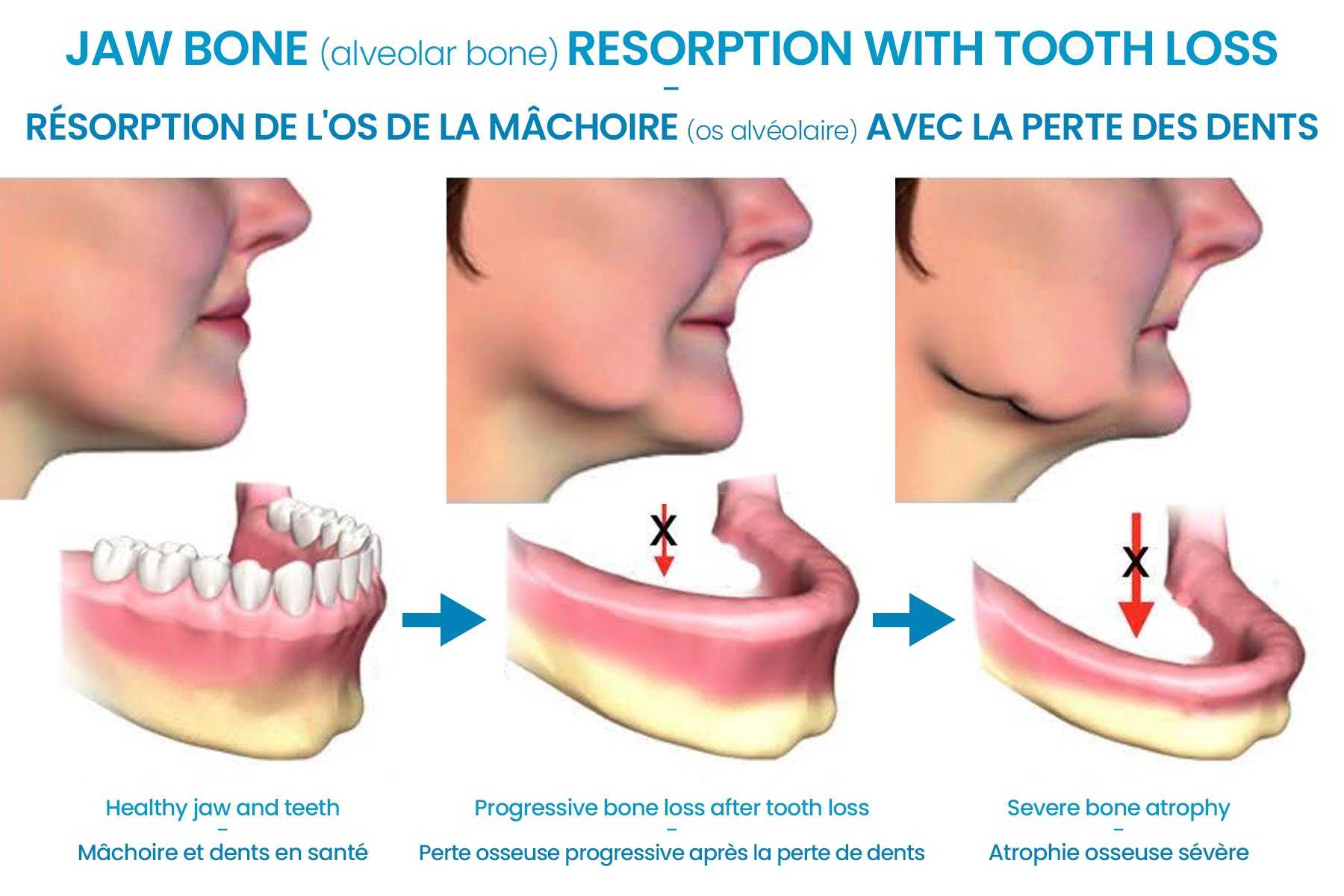Bone loss

Have you ever observed elderly people removing their teeth when they eat, placing them on a napkin or next to their plate? And yet, teeth are made for eating. This may seem like a harmless gesture, but behind it lies a fundamental problem: bone loss. Over the years, I’ve come across many smiles marked by this difficulty, and I can tell you that maintaining dentures, especially lower ones, becomes a real challenge as time goes by.
But how does bone loss occur? The jawbone is essential to support the teeth. Once teeth are missing, the bone is no longer stimulated and begins to shrink progressively. The early stages after a dental prosthesis is fitted are the most difficult, as the patient has to get used to this new reality and adapt to reduced jaw function. Over the decades, the jawbone and gums slowly shrink, eventually making it impossible to wear a denture. This process takes place over a long period of time, often imperceptible to patients until it’s too late and the bone is virtually non-existent.
You only have to visit a retirement home to realize that few residents use their teeth to eat. This is frustrating, because there’s a simple solution to the problem: dental implants. Dental implants stimulate the jawbone, preventing it from shrinking. What’s more, they provide solid support for artificial teeth, enabling patients to regain the use of their teeth.
As we age, investing in dental implants may be the best decision for preserving oral health and maintaining optimum quality of life.
